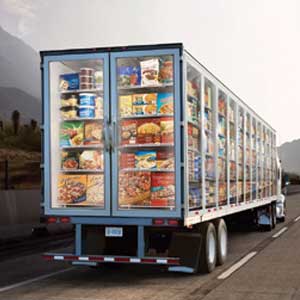THANK YOU FOR SUBSCRIBING

Edging on Supply Chain and Customer Demand
Alfons Van Woerkom, and Supply Chain Director Asia,


Alfons Van Woerkom,
“Congratulations! You have sold 16 percent more than your target”, it is a sentence which most sales managers like to hear as it resonates positively with people because it has an air of overachievement & success related to it.
Behind this one sentence there is likely to have played out one or more Shakespearean drama’s if this is a producer selling company, what to think of:
- Was their finished good supply available for this overachieving customer,
- If it was supplied, did it come at the expense of another customer?
- If it is made to order, did production have to scramble raw materials and packaging at higher cost and hence this oversell results in lower margin for the company?
- Is this oversell sustainable, should the company adjust its forward planning and buy more raw & packaging materials?
In Supply Chain across the world the focus is on supplying customer demand in the best possible way, decisions are made daily on what to Source, what to make and what to Deliver. In case of shortage we are being asked to make the most sensible trade offs, but these are not always the
All these moving parts require an intense integration between Sales, Finance and Supply Chain. This integration typically evolves over time and you can expect to see the following phases:
1) People & Leadership: In a volatile environment leadership realizes that work needs to be done aligning on 1 signed off and agreed sales number for the whole organization to work to. This leads to common targets, templates (excel) and joint review meetings.
2) Performance Measurement & Segmentation: after phase 1, it will be visible which product categories (and/or sales managers) are more stable and better to forecast then others. The organization can then focus on categories with high make cost/high inventory and volatile demand. This phase can also tackle a cultural bias: some cultures like to under promise and over-deliver and others like to over commit but under-deliver, both are equally harmful for a supply chain and the phase 2 visibility will help to take this bias into account.
3) Systems & Tools: this is where the CIO’s really start to deliver value: A common platform to measure actual and planned performance and provide analytics on root cause for missing plans. This common platform is critical to conduct true company wide Sales & Operations Planning on a monthly basis; most important is to work on 1 forecast number (in reality most organization have a ‘real’ sales number, a ‘real’ finance team number for HQ and a ‘real’ supply chain number for manufacturing and inventory planning purposes, a common platform takes this disparity away. Another reason to invest in a common platform is to get automated input into joint function review meetings and the ability to have all of your analytics for sales, for finance and for Supply Chain only a click away.
After a long time and going through these 3 phases, you will hear people say:
Weekly Brief
I agree We use cookies on this website to enhance your user experience. By clicking any link on this page you are giving your consent for us to set cookies. More info
Read Also













